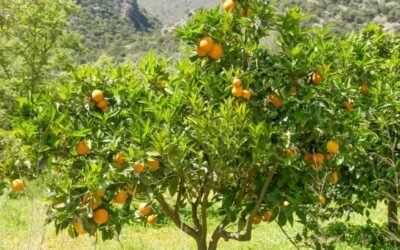Facts You May Not Know About Honey
Honey is a gooey golden syrup that is famed for being highly delicious, sweet and essential in every home. They are one the longest food to be around and they are just a natural wonder. Get more honey facts that will pique your interests here!
Honey never spoils
This statement can be a myth about honey, depending on how you store your honey. Honey if left unopened and kept tightly sealed in a glass jar will not spoil! It can be kept for ages and honey which was thousands of year old, unearthed from Egyptian tombs was still edible! Hence, honey has a long shelf life. Honey can be kept for such a long time because it contains very little moisture, which prevents bacteria from growing in it. However, if your honey jar is not sealed properly, it can be exposed to microbes from the external environment which causes bacteria and fungi to breed in the honey, spoiling it.
The process of ensuring that honey contains little moisture and anti-bacterial properties are interesting. After bees have gathered nectar and deposited in the hexagonal cells, they will flap their wings together to fan and create an air current so that the nectar can dry. As for the anti-bacterial properties, it is derived through the enzymes in bee’s stomachs where nectar is stored after being sucked from the flower. The enzymes break down nectar into gluconic acid and hydrogen peroxide, of which the latter is an antiseptic that kills of bacteria and harmful components in honey. It is interesting how bees have natural processes to create these properties of honey.
Honey is a source of carbohydrates
Honey is composed mainly of carbohydrates and water, providing 17 grams of carbohydrates per tablespoon. These carbohydrates are on the lower glycemic index and are often used by athletes as a source of fuel for strenuous exercise.
There are many varieties of honey
Honey comes in different colours and flavours, depending on where and the types of flowers that the bees pollinate. Climate also plays an important role in determining the flavour of the honey. Some variants of honey include clover honey, buckwheat honey, windflower honey and eucalyptus honey. Eucalyptus honey contains a slight tinge of menthol flavour, while buckwheat honey tastes strong and spicy. The honey that we offer is Manuka honey, made from the nectar of the Manuka and is one of the most popular honey due to it’s unique property and distinct flavour.
Honey was a precious commodity in the Middle Ages
Honey was treasured so much that the German landlords required the peasants and farmers to pay using honey and beeswax during the 11th century. The honey was used then, to sweeten beer.
Humans have used honey for a long time
Humans have used honey for more than forty centuries. In fact, a 5500 year’s old honey was found in a tomb of a noblewoman in Georgia, near Tbilisi. An even more compelling evidence of human’s long history with honey was an ancient cave painting depicting a human extracting honey from a hive. It was found in Valencia, Spain and is said to be 15000 years old. Roman physicians of the past also used honey to let their patients sleep. In early Greece and Rome, honey represented fertility, love and beauty.
Bees make a lot of honey
A beehive can produce between 13kg and 45kg of honey per year. However, there must be a large number of bees in the colony as each bee can only make one-twelfth a teaspoon of honey in its lifetime. Hence, a single bee colony contains about 10000 to over 60000 bees. In addition, to collect about 453 grams of honey, a colony of bees must collect nectar from around two million flowers and fly a distance of over 88514 km. This is equivalent to a lifetime of work of around 800 bees. Hence it takes immense work for bees to produce the honey that we eat today.
Honey was produced ages ago
Plants with flowers grew 100 million years ago while bees were identified as different from warps and existed a few million years later. Sometime later, bees started producing honey around three million years ago, as an old honeycomb of that age had been excavated.
Honey has medicinal properties
Due to its antibacterial and antiseptic properties mentioned above, honey makes for good topical treatments for wounds, abrasions, cuts and ulcers. Honey helps to kill the bacteria and prevent infections on the afflicted area. It also promotes tissue growth and faster healing. Just be careful not to spread the layer of honey too thick or the wounds cannot air and breathe.
Conclusion
We hope that these facts about honey brings you new interests about honey! Honey has been produced and used by people for such a long time and it is no wonder why. It is a versatile item that can be used for cooking or for treating wounds and it even has a long shelf life. Get your essential Manuka honey today!



